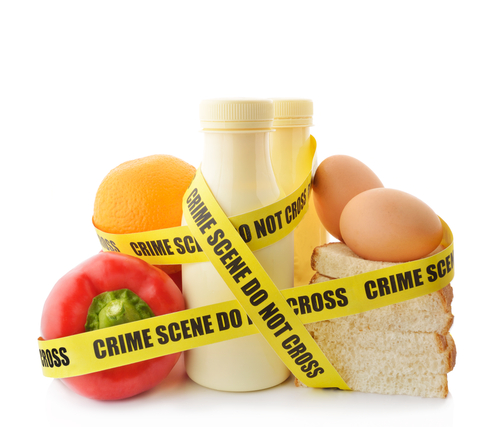As hearty as they seem, children are still considered part of the at-risk populations, along with pregnant women and elderly folks, who are immunosuppressed, or with less efficient immune systems. Read more about the basics of food safety, sanitation and storage to keep food-borne illnesses at bay, especially in hot weather.
1. Know the “danger zone”. Temperatures between 4 to 60°C (40 to 140 °F) are ideal for food-borne bacteria to grow; also, such bacteria will grow much faster in the middle of the zone, at temperatures between 21 and 47 °C (70 and 117 °F). The rule of thumb is to never leave food, including groceries and cooked dishes, out at room temperature for longer than one hour, especially if it’s 32 °C (90 °F) and above outside.
2. Be aware of foods that are especially hazardous inside the danger zone. These include:
- Meat, fish, poultry and shellfish
- Dairy products
- Eggs and other protein-rich foods (tofu, tempeh, etc.)
- Cut or peeled fresh produce
- Cooked vegetables, beans, rice and pasta
- Sprouts (bean, alfalfa, sunflower, etc.)
- Sauces, such as gravy
- Any foods containing the above (salads, sandwiches, casseroles, quiches, etc.)
3. Keep cold things cool. At the supermarket, pick up frozen foods and perishable items, such as dairy products, eggs, meat and fish, right when you check out, keeping them as cool as possible. When it’s especially hot out, ask the store staff or seller to pack your meat and/or seafood in ice, or bring your own cooler bag with ice packs, to transport such items home at a safe temperature. At home, store cold foods property – they will last longest in a refrigerator kept below 4 °C (40 °F).
4. Keep hot food hot at 60 °C (140 °F) or warmer. The potential for bacterial growth increases as food cools because the drop in temperature allows microorganisms to thrive. Refrigerate leftover hot foods 1 to 2 hours after being cooked to avoid bacteria contamination. Use a thermos to keep hot foods warm when you are on the go.
5. Be aware of cross contamination. When shopping for food, keep raw proteins and eggs separate from other food items. At home, continue to separate such items when storing them in the fridge, and use separate cutting boards for meat, poultry, fish, and produce. For cooked foods, always serve them on clean plates, not those previously holding raw meat and poultry; otherwise, bacteria that may have been present in raw meat juices can cross contaminate the food to be served.
6. Wash everything, starting with your hands and repeat before, during and after food preparation. During the prep process, the US FDA recommends scrubbing all produce with water before cutting, peeling and cooking. Do not rinse raw poultry and other proteins, as this can spread bacteria to your sink, kitchen counter and other surfaces.
7. When in doubt, throw it out. Trust your senses (but don’t taste the food to see if it’s still good, as you cannot taste bacteria that causes food poisoning). Basically, if the food has a funny smell, slimy sheen or stickiness, it’s likely to be have spoiled.
Register your email address here and we’ll notify you when a new article gets uploaded.















